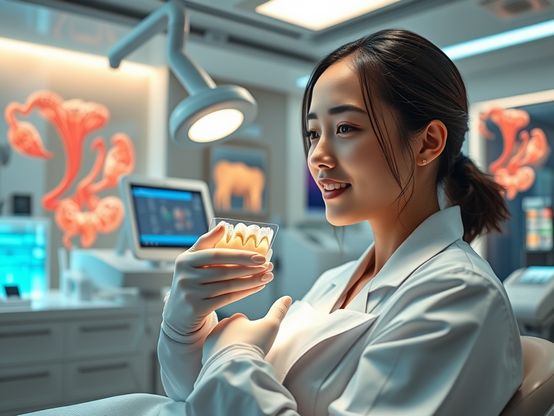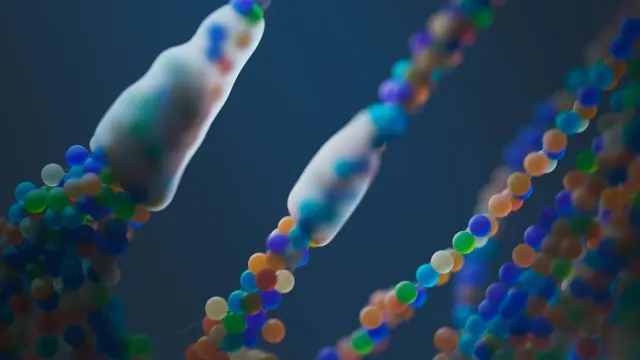The Birth of the Cyborg Century-1
The Birth of the Cyborg Century
A Tooth That Changed Everything… In 2033, a patient in Tokyo walked into a dental clinic missing a molar. Instead of leaving with a titanium implant, she received something more radical. A vial of her own stem cells was coaxed into forming the basis of a new tooth. Six months later, the tooth had grown naturally into her jaw.
This small event barely made headlines, but in hindsight, it marked a turning point. For the first time, the human body replaced its own missing part through lab guidance rather than mechanical intervention. That tooth opened the door to a future where people could grow new organs, bones, and tissues rather than simply repair them with synthetic substitutes.
By the 2040s, regenerative medicine was advancing faster than anyone expected. Miniature hearts known as organoids were grown for patients with cardiac disease. Liver tissue was manufactured for transplant. Cosmetic procedures began offering biological replacements instead of implants. The line between healing and enhancing blurred.
Everyday Cyborgs
Exoskeletons followed the same trajectory. Early versions were heavy and awkward, designed mainly for military use. By the mid-21st century, they had slimmed into wearable frames that supported construction workers, nurses, and warehouse staff. Someone could lift hundreds of pounds without injury. The technology was first marketed as protective, but soon it became an enhancer.
Neural interfaces were another quiet revolution. At first, they helped patients with paralysis type on screens or control robotic arms. Then they became commercial tools. Students wrote essays with thought alone. Musicians composed music by imagining the sound. Surgeons guided robotic instruments with unmatched precision.
None of these breakthroughs looked like the glossy science fiction visions of robots with glowing eyes. They looked like ordinary people using ordinary tools. A grandmother in Berlin with a lab-grown heart did not seem like a cyborg. A student in Toronto who finished homework by thought projection still looked like any other teenager. But piece by piece, humanity was transforming.
The Cultural Shift
Technology that begins as optional often becomes necessary. Smartphones were once luxuries. By the 2020s, it was nearly impossible to live without one. The same pattern began emerging with implants, exosuits, and regenerative procedures.
By 2050, healthcare providers will offer regenerative replacements as part of basic coverage. Large companies subsidized exosuits because they reduced injuries and improved productivity. Neural interfaces became career boosters. Opting out slowly looked less like freedom and more like falling behind.
Some resisted. They called themselves naturals. They avoided enhancements, choosing to live with worn joints and slower reflexes. For them, healthcare costs rose. Job opportunities narrowed. They were not banned from society, but they were increasingly marginalized.
The cyborg century was underway, and not everyone chose to board the ship.
The Borg Parallel
Star Trek had already given us a vision of where this could lead. The Borg embodied the fear of assimilation, of losing individuality to the machine. Their strength came from forced connection and submission to a hive mind.
We are not Borg. Our upgrades are still voluntary. But the social pressures that make technology unavoidable are strong. When everyone else can run faster, heal quicker, and think together, what does it mean to refuse? The danger is not only technical but cultural.
The Cyborg Threshold
By mid-century, the threshold had been crossed. Humanity was no longer just repairing itself but enhancing itself as routine. What began with a single tooth became a cascade of upgrades that changed what it meant to be human.
Gene Roddenberry imagined a Federation where technology amplified freedom and dignity, and a Borg Collective where it erased them. Both futures begin with the same tools. The choice between them will depend not on the science, but on how society decides to use it.
The cyborg century is here. The only question is whether it empowers or assimilates us.
#ai #Cyborg #future #NeuralTech #RegenerativeMedicine #StarTrek #TheBorg

Cellular Reprogramming of Somatic Cells to Stem Cells: an Innovative Approach in Pharmaceutical Biotechnology - Cytology and Genetics
Abstract The advancement of cell reprogramming technologies has revolutionized the landscape of regenerative medicine and drug research. This review scrutinizes the process of reprogramming somatic cells into stem cells, particularly focusing on induced pluripotent stem cells (iPSCs), and elucidates their evolution over time. Initially, the review delineates the disparities between normal cells and stem cells. Subsequently, it delves into the historical trajectory of embryonic stem cells (ESCs) and iPSCs. The pivotal role of somatic cell reprogramming in pharmaceutical biotechnology is explored, highlighting its applications in disease modeling, drug discovery, regenerative medicine, and personalized therapies. The review provides insight into the fundamental principles of reprogramming techniques, encompassing iPSC generation, transcription factors, epigenetic modifications, and non-integrative reprogramming methods. Special emphasis is placed on genome-editing techniques such as CRISPR-Cas9, TALENs, ZFNs, and base editing, given their paramount importance in cellular reprogramming endeavours. Finally, the review deliberates on the diverse modalities through which cellular reprogramming can rejuvenate dead cells into stem cells, underscoring the transformative potential of this technology across various domains of biomedicine. By elucidating the multifaceted effects and opportunities of somatic cell reprogramming, this review aims to serve as a valuable resource for scholars and practitioners in the realms of cellular and molecular biology. Graphical Abstract
🚀 Fos nâng kh(Bundle) theo sang! Nghiên cứu Đức phát triển 3D printer nhỏ, mới shoot hấp trong cơ thể. Biến đổi chữa lành và quantité. #NghienCuuThe #VanHoa #ChutUkBaoVe #RegenerativeMedicine #3DPrinting #Biotechnology
https://www.reddit.com/r/singularity/comments/1oatcgd/researchers_in_germany_have_achieved_a/
What Are Stem Cells: The Body's Master Cells https://theblogofscience.com/what-are-stem-cells-the-bodys-master-cells/
#StemCells #RegenerativeMedicine #CellBiology #MedicalResearch #Biotechnology #TissueEngineering #HealthScience #Innovation #Therapeutics #Biology
🧬 Promising Medical Breakthrough for Paralysis!
A new spinal cord implant with living tissue can now be 3D-printed directly inside the body without major surgery.
💡 Benefits: Partial restoration of movement, improved quality of life, and reduced dependence on assistive devices.
⚠️ Note: Human trials remain limited, potential complications exist, and effectiveness for patients with optic nerve loss is still uncertain.
#MedicalInnovation #Paralysis #RegenerativeMedicine #NewHope #Health



